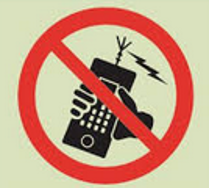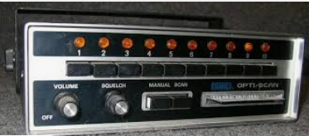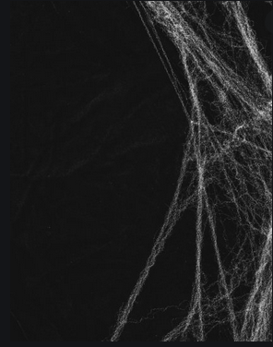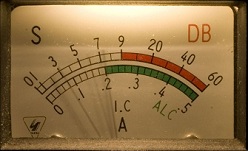
“Your codeplug will never be complete” – a quote I saw on a site about amateur radio DMR codeplug generation.
I’ll argue against that thought.
I wish I could get all of the background info I wanted in here – but I haven’t had the training I would like. There are entire Motorola hosted courses on codeplug layout and design. I’ll hit a few operator concepts here, because they’re important from a tactical perspective, though.
Your codeplug design doesn’t need to challenge your radio’s capacity!
First, you don’t need EVERY Brandmeister / K4USD / DMR-MARC / TGIF talkgroup in existence in your radio. How often do you expect to talk to hams in North Korea? Or maybe if you want to, then do you really need Mozambique? Think about what you plan to use. I bet the list of what you ACTUALLY use is less than 16 talkgroups or channels.
Ok – so your radio can HANDLE 10,000 talkgroups – fine, let’s put them all in there, but seriously think about organization.
A well designed zone doesn’t generally exceed 16 channels. Bear with me before you start the hate mail.
What is a zone?
OK – a “Zone” is usually used like a bank of channels – so your radio MIGHT refer to it as something different than a “Zone”, but this is generally becoming the accepted term.
Now – consider the term – “Zone” – let’s generally think about a ZONE as a PHYSICAL zone – like Zone A is the north side of town, Zone B is the south side of town (Just beware of Leroy Brown, as Jim Croche warned us), and so on.
Zone Size
16 channels is a historic zone size, likely because it is represented by 1 hex character (4 binary bits), and that’s what a lot of radios have for channel knob limitations – well, commercial radios, anyway. Now, because of that history, 16 is more or less our defacto standard – and it’s not a bad one.
Think tactically. Rather than have a huge zone to scroll through to find your favorite talkgroups, what if you organized things horizontally with a limited depth. It’s often easier to scroll through zones to get to the group of channels you want. In a pinch, it’s faster to rotate through 15 channels to get to where you want, rather than 200 channels.

There’s a lot of schools of thought that advocate for ginormous zones – whether you’re a scannerhead (“I want to hear EVERYTHING!”), a public-safety-prepper (“I want to talk to EVERYONE!”), or just haven’t thought about good operating practices…. But here’s some food for thought.

I just got done pulling apart a P25 codeplug that was built by a scannerhead. It had zones exceeding 50 channels – and a LOT of them. While this is a public safety codeplug, the example bears discussion. First, if I went to the area that said zone was designed for, it’s easy enough to find – for the most part. Now, once I was on-site, how long is it going to take me to find the channel I need, and call in? Moreover, do I need every talkgroup in the system…. Do I need the coroner? Do I, or will I, ever have NEED or AUTHORIZATION to talk to the law enforcement TAC talkgroups? Chances are – 1) I will never have that need, 2) I will never be authorized, and 3) I won’t have their crypto keys. So don’t even bother with things like that. After some careful consideration, and discussion with our leadership, we determined that interoperability talkgroups and common talkgroups are all we will ever be authorized for. After a brief review, we then hacked that zone down to a 16 channel zone. Now we have an easy-to-navigate zone that won’t allow anyone to get into trouble. If you want to listen to the rest of them, get a scanner. At least that’s my take on it. It’s faster, and keeps you out of trouble.
Zone Layout
Let’s consider a “Home” zone – the zone you’ll use the most. What will you have in it? Probably your local metro talkgroup, maybe a regional, state, and a handfull of talkarounds. That’s 13. Add your buddy’s local metro area or state, and you still have a channel to grow. If you use a bridge or other special interest talkgroup – do you need your state or all of the talkarounds?
In a public safety radio, my home zone contains 16 channels – one or two agency or user specific channels, NOAA SCAN, a handful of on-scene talkaround channels, and a handful of regional interoperability channels. That being said – often my codeplug is designed with the heaviest used channels being located at position 1 and 16. This allows me to fully rotate my channel selector to the end of the travel – so I can find what I need without looking. This could be the same channel (e.g., an 800 MHz talkgroup), or different channels (e.g., a VHF talkgroup and a VHF talkaround channel), depending on the radio configuration and operational need.
“But I want to have all 50 states, because just in case”
OK – then add another zone with all the states, and a zone with the call districts, and another one with the different regional talkgroups. While you’re at it, add a zone with JUST the talkarounds. Chances are, if your radio has enough talkgroups to fit all of the (pick your network) talkgroups, it also has a LOT of zones. USE THEM!
So you have a couple repeaters in your area, and you occasionally drive around. Tailor a zone for that. Do you really need every talkgroup on every repeater? Come up with a standard list of 16 or so talkgroups, and program an identical zone for each repeater with that list of talkgroups. If your radio and local repeaters support roaming – even better. If not, know where your repeaters cross coverage, and know when to change your zone. This doesn’t much apply to the hotspot crowd, obviously.
For that matter, pick ~10 standard talkgroups, program them for each repeater, and leave the last 6 channels for talkgroups specific to that repeater (local 2/9, or a different region – whatever you need!).
The use of Auto-Scan

Another “neat” feature I’ve been playing with is the “Auto-scan” channel flag. About the best use has been the NOAA weather channels. The first channel in my NOAA (receive only) zone is “NOAA SCAN”. This channel is programmed for my local NOAA channel, but has “Auto-scan” enabled – and is attached to a scan list containing all 7 NOAA channels. The result is changing to channel 1 in the NOAA zone will allow the radio to just go find the local channel wherever I am. The same NOAA-SCAN channel could be put in a “home zone”.
Codeplug Evolution

Now, back to the ever evolving codeplugs – once you get something set – why do you need to constantly change it? IF it’s set, and it works, leave it be. If you get a new repeater or hotspot, yes, by all means, update the codeplug – but when your infrastructure is static, leave the radios alone. The one difference might be if you want to update the worldwide database of DMR IDs. Why else would it be changing, unless you can’t decide which network to attach your hotspot with, and keep reverting… but even then, put in the extra zone, and go with it.
Obviously, if you travel, then there’s a high likelihood you’ll be adding zones for your new locations – that’s an exception. Even public event oriented folks should have something of a pre-defined plan for annual events. Now, things will change from time to time – infrastructure changes, CONOPS changes… but I realized the other day that my VHF codeplug hasn’t changed for 2 years – and the last change was because we did add new infrastructure for an event.
Again, this is not a RULE – but it’s food for thought as you configure your radio.
